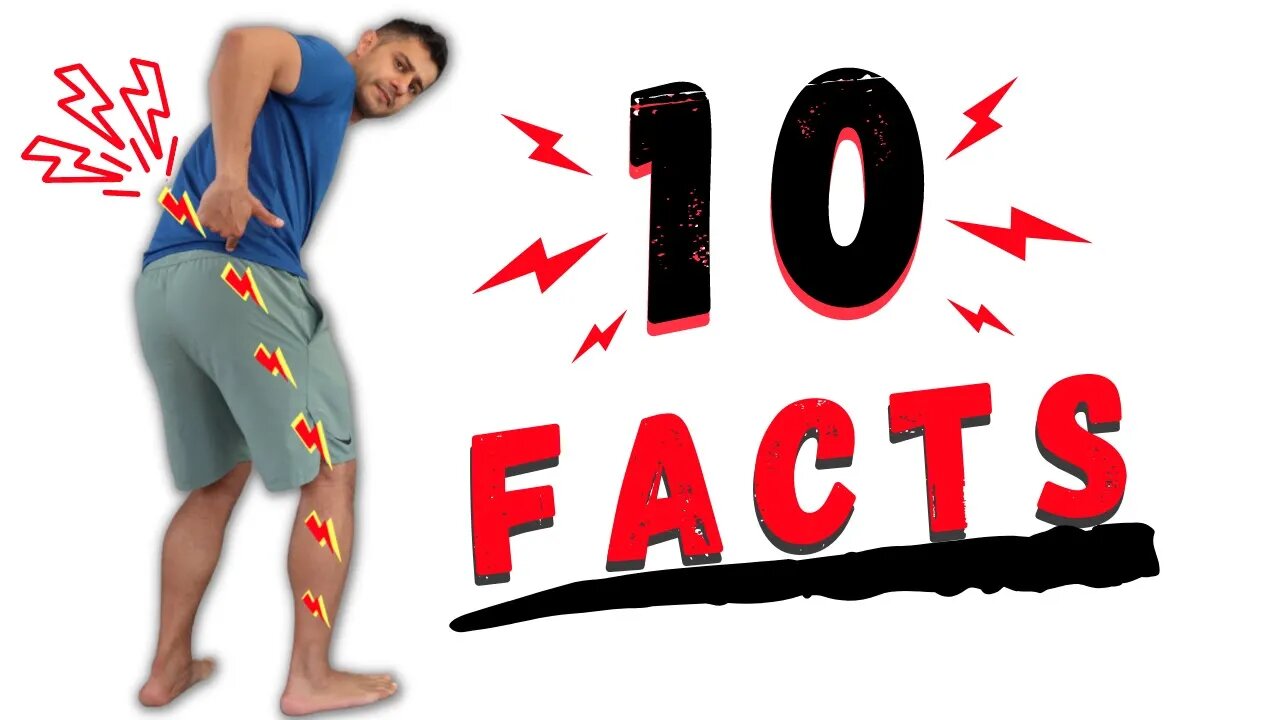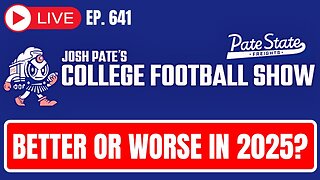Premium Only Content

10 Facts about lower back pain
10 Facts about lower back pain
In this video I'm sharing with you 10 facts about lower back pain that can help you to manage your lower back pain.
1) The spine is strong, robust and can be trusted.
The spine is a robust, adaptable structure, capable of safely moving and loading in a variety of postures. Common warnings to protect the spine are not evidence-informed and can lead to fear.
2) Persistent back pain is rarely associated with serious tissue damage.
Persistent back pain can be distressing and disabling. If you have had an injury, tissue healing occurs within 3 months. If pain persists past this time, it usually means there are other contributing factors. A lot of back pain begins with no injury or with simple everyday movement. These incidents may sometimes coincide with episodes of stress, tension, fatigue, inactivity or unaccustomed activity which make the back sensitive to loading and moving.
3) Getting older is not a cause of low back pain.
Although it is a widespread belief and concern that getting older causes or worsens back pain, research does not support this and evidence based treatments can help at any age.
4) Scans rarely show the cause of back pain.
Scans are only helpful in a minority of people. Lots of scary sounding things are reported on scans such as disc bulges, degeneration, protrusions, arthritis etc. Unfortunately these scans do not say that these findings are very common in people without back pain and that they don’t predict how much pain you feel or how disabled you are.
5) Pain with exercise and movement doesn’t mean you are doing harm.
When pain persists, it is common that the spine and surrounding muscles become really sensitive to touch and movement. The pain you feel during movement and activities reflects how sensitive your structures are, not how damaged you are. So it’s safe and normal to feel some pain when you start to move and exercise. This usually settles down with time.
6) Back pain is not caused by poor posture.
How we sit, stand and bend does not cause damage even though these activities maybe painful. A variety of postures are healthy for the back. It is safe to relax during everyday tasks such as sitting, bending and lifting with a round back – in fact it is more efficient.
7) Back pain is not caused by a “weak core”.
Weak “core” muscles do not cause back pain, in fact people with back pain often tense their “core” muscles as a protective response. This is like clenching your fist after you have sprained your wrist. Being strong is important when you need the muscles to switch on, but being tense all of the time isn’t helpful. Learning to relax the “core” muscles during everyday tasks can be helpful.
8) Backs do not wear out with everyday loading and bending.
The same way lifting weights makes muscles stronger, moving and loading make the back stronger and healthier. So activities, like running, twisting, bending and lifting, are safe if you start gradually and practice regularly.
9) Pain flare ups don’t mean you are damaging yourself.
While pain flare ups can be very painful and scary, they are not usually related to tissue damage. The common triggers are things like poor sleep, stress, tension, worries, low mood, inactivity or unaccustomed activity. Controlling these factors can help prevent exacerbations and if you have a pain flare up, instead of treating it like an injury, try to stay calm, relax and keep moving!
10) Injections, surgery and strong drugs usually aren’t a cure.
Spinal injections, surgery and strong drugs like opioids aren’t very effective for persistent back pain in the long term. They come with risks and can have unhelpful side effects. Finding low risk ways to put you in control of your pain is the key.
Reference:
Back to basics: 10 facts every person should know about back pain
https://pubmed.ncbi.nlm.nih.gov/31892534/
*MEDICAL DISCLAIMER*
All information, content, and material of this video or website are for informational and demonstration purposes only. It is not intended to serve as a substitute for the consultation, diagnosis, and/or medical treatment of a qualified physician or healthcare provider.
Don’t use this content as a replacement for treatment and advice given by your doctor or health care provider. Consult with your physical therapist or healthcare professional before doing anything contained in this content.
By watching this video, you agree to indemnify and hold harmless Dublin Sports Injury Clinic(and its representatives) for any and all losses, injuries, or damages resulting from any and all claims that arise from your use or misuse of this content. Dublin Sports Injury Clinic makes no representations about the accuracy or suitability of this content.
USE OF THIS VIDEO'S CONTENT IS AT YOUR OWN RISK.
#sciaticatretament #sciaticapainrelief #sciatica #backpain #Soreback #Lowerbackpain #Sciatica #backpainrehabilitation #sciaticapainrelief #sciaticapain
-
 33:00
33:00
Bob The Physio
1 year agoThe biggest challenge with chronic lower back pain
145 -
 38:23
38:23
ZeeeMedia
4 hours agoBanks Make Shock Move, Signals of Looming Economic Storm | Daily Pulse Ep 55
1.45K6 -
 LIVE
LIVE
Josh Pate's College Football Show
3 hours agoCFB Chaos Scenarios | Better OR Worse In 2025 | Toughest Places To Play | Truth About Josh Heupel
41 watching -
 8:42
8:42
WhaddoYouMeme
4 hours agoIran's God: The Reason The Ceasefire Won’t Last
625 -
 12:09
12:09
The Shannon Joy Show
2 hours agoMAHA: Betrayal, Bureaucracy & Vaccine Silence
1883 -
 1:04:38
1:04:38
BonginoReport
4 hours agoWho’s Your Daddy?! Internet Erupts After Viral Trump Moment (Ep.78)
155K37 -
 1:01:38
1:01:38
The Nick DiPaolo Show Channel
5 hours agoHegseth Drops Bunker Bomb On Fake News | The Nick Di Paolo Show #1757
22.6K20 -
 LIVE
LIVE
SpartakusLIVE
3 hours ago#1 Verdansk HERO || Live EARLY off EARLY
65 watching -
 58:25
58:25
Donald Trump Jr.
5 hours agoHard Left Turn: Dems vs Reality, Plus Interview with Nate Morris | TRIGGERED Ep.253
36.1K41 -
 1:22:34
1:22:34
Kim Iversen
5 hours agoDealmaker or Delusion? Trump’s Plan to End Gaza War in 2 Weeks
97.4K76